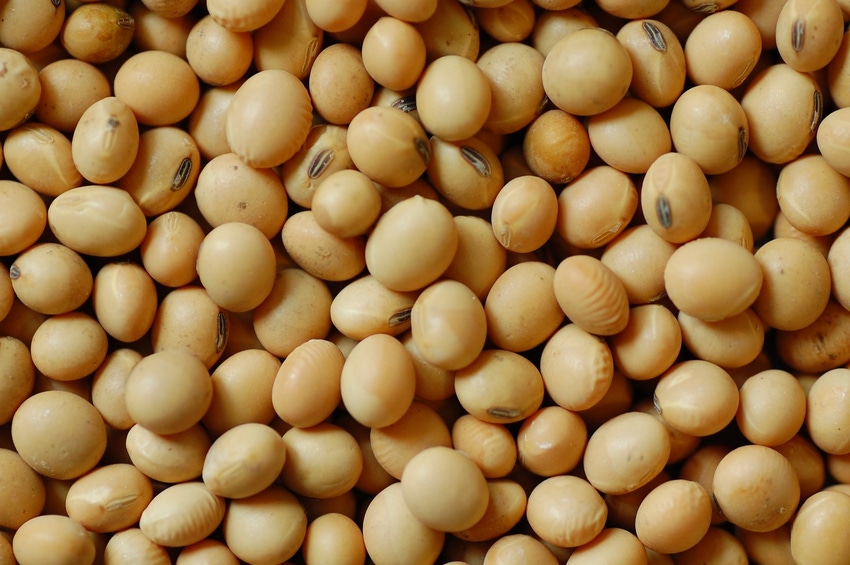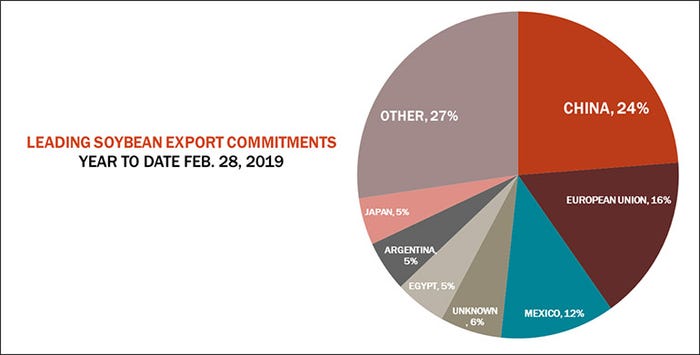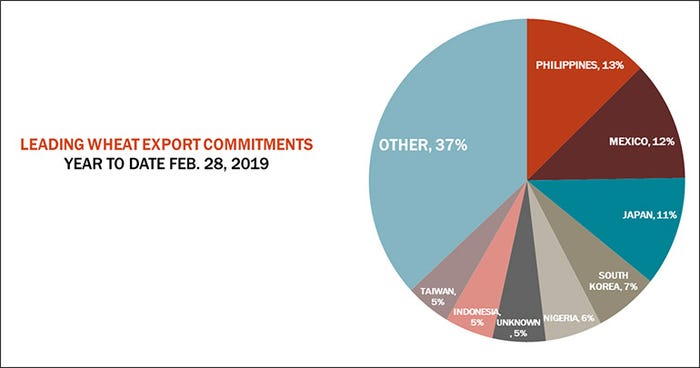
Soybean exports sputtered last week, according to the latest round of USDA data out Thursday morning. According to Farm Futures senior grain market analyst Bryce Knorr, China has a large hand in the latest trend.

“If China is going to buy a lot of soybeans from the U.S. they’re apparently willing to wait until a trade deal is inked,” he says. “At least that’s the implication of this week’s export sales report, which showed China buying a disappointing 5.4 million bushels last week. While that cements China’s position of the leading buyer of U.S. beans, it led to an overall slow week.”
The only positive spin to put on the report is the relatively low total now needed weekly to reach USDA’s forecast, which is down to 16.6 million bushels thanks to record levels of unshipped sales headed into the second half of the marketing year, Knorr adds.
Soybean exports notched 11.4 million bushels of old crop sales, plus another 2.6 million bushels in new crop sales, for a total of 14.1 million bushels for the week ending February 28. That was sharply below the prior week’s tally of 80.7 million bushels and fell below trade estimates of 32.2 million bushels. Soybean export shipments reached 36.1 million bushels last week, which stayed above the weekly rate needed to match USDA forecasts, now at 34.6 million bushels.
For the 2018/19 marketing year, which began September 1, China leads all destinations for U.S. soybean export commitments, accounting for 24% of the total pie. Other leading destinations include the European Union (16%), Mexico (12%), unknown destinations (6%) and Egypt (5%).


Corn export sales fared somewhat better, with 38.2 million bushels of old crop sales and another 11.1 million bushels of new crop sales for a total of 49.2 million bushels. That slightly bested the prior week’s total of 48.8 million bushels and trade estimates of 43.3 million bushels. The weekly rate needed to meet USDA forecasts moved lower, to 32.9 million bushels. Export shipments of 29.3 million bushels failed to keep pace with the rate needed to match USDA forecasts, now at 54.5 million bushels.
Mexico tops all destinations for corn export commitments this marketing year, accounting for 33% of the total. Other leading destinations include Japan (21%), Colombia (8%), South Korea (8%) and Peru (5%).

Wheat export sales gained some momentum last week after tallying 22.8 million bushels in old crop sales and another 7.5 million bushels in new crop sales for a total of 20.4 million bushels. That’s well above the prior week’s total of 17.5 million bushels and more than doubled trade estimates of 14.7 million bushels. The weekly rate needed to match USDA forecasts moved lower, to 12.8 million bushels. But export shipments of 22.9 million bushels failed to match USDA forecast of 30.7 million bushels.
For the 2018/19 marketing year, which wraps up in a few months, the Philippines are the No. 1 destination for U.S. wheat export commitments, with 13% of the total. Other diverse leading destinations include Mexico (12%), Japan (11%), South Korea (7%) and Nigeria (6%).

Click the download button for more charts and graphs.
About the Author(s)
You May Also Like






